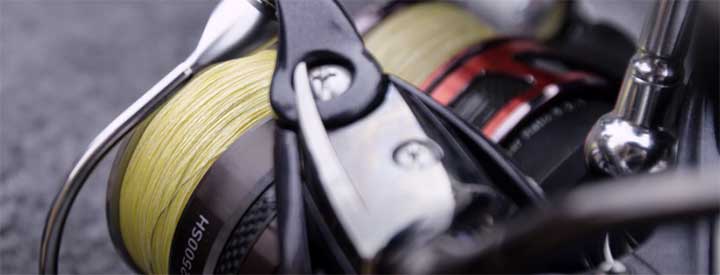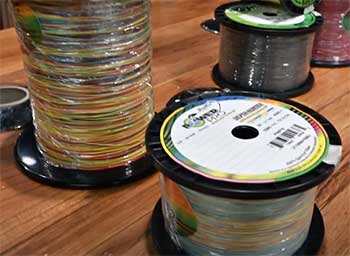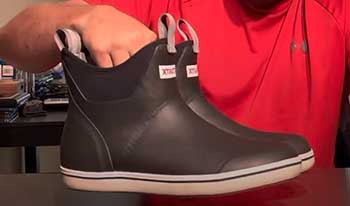When it comes to the art of angling, the fishing line you choose can make or break your day on the water. Anglers have long debated the supremacy between two titans in the world of braided fishing lines: Cortland Master Braid and PowerPro.
Here we’ll delve deep into the strengths and weaknesses of these two renowned brands, providing you an insightful comparison that will hopefully help you make an informed decision.
Let’s get started!
A Brief Comparison Table
| Characteristic | Cortland Master Braid | PowerPro |
| Material | High-strength polyethylene fibers | Spectra Fiber |
| Weave | Tight, dense weave | Looser weave |
| Color Fading | Tends to fade over time | Superior color retention |
| Flexibility | More supple | Somewhat stiffer |
| Strength | Excellent, but depending on lb-test | Excellent, but depending on lb-test |
| Casting Performance | Exceptional due to smooth line | Good, but slightly less due to increased friction |
| Price | Higher-end | More affordable |
| Sensitivity | Highly sensitive due to low stretch | Slightly less sensitive due to stiffer construction |
| Durability | Highly durable | Superior abrasion resistance due to Spectra Fiber |
Cortland Master Braid: The Master of Resilience

Cortland Master Braid has gained a lot of traction amongst seasoned anglers. But what sets it apart?
The Pros
- Superb Strength: Master Braid boasts an impressive pound-test range, serving as a versatile choice for numerous fishing conditions. With its exceptional strength, you can confidently chase bigger catches like musky, tiger musky, pike, and other large species.
- Smooth Performance: It’s highly regarded for its smooth and frictionless performance. Thanks to its tightly woven fibers, it delivers a fantastic casting experience, even for longer distances.
- Low Stretch: Master Braid possesses low stretch characteristics, ensuring a sensitive and direct connection to your quarry, making it a great pick for musky fishing where instantaneous hook sets are paramount.
The Cons
- Color Fading: Some users report that the color of Master Braid can fade over time, potentially making it more visible to fish.
- Price: The Master Braid is on the pricier side, which may deter budget-conscious anglers.
Also Read: Differences Between Tanacom 500 And 750 Fishing Reels.
PowerPro: Unleashing the Power of Braided Lines
PowerPro, a stalwart in the fishing line industry, has its own set of attributes to consider.
The Pros
- Spectra Fiber Construction: PowerPro is made from high-quality Spectra Fiber, which affords it exceptional abrasion resistance and durability. It can withstand the rigors of fishing in heavy cover, a definite advantage when you’re battling a feisty pike.
- Versatile Range: It’s available in a broad pound-test range, providing versatility for various fishing applications. Whether you’re targeting muskies or any hard-fighting fish, PowerPro has got you covered.
- Color Retention: PowerPro lines tend to retain their color longer than some of their competitors, reducing the chances of spooking wary fish.
The Cons
- Stiffness: Some anglers find PowerPro to be a tad stiffer than other lines, which can impact casting distance.
- Potential for Wind Knots: Some users have reported a higher incidence of wind knots with PowerPro, although this can often be mitigated with proper spooling and casting technique.
Key Differences Between Cortland Master Braid and PowerPro
To better guide your fishing line decision, we’re going to dig even further into the key differences between Cortland Master Braid and PowerPro.
Remember, these distinctions are what make each line unique, and understanding them will allow you to make the most effective choice for your fishing endeavors.
- The Material

Cortland Master Braid is crafted using proprietary high-strength polyethylene fibers.
This advanced material gives the Master Braid its renowned strength and durability, handling the rigors of many different fishing environments.
PowerPro, on the other hand, uses Spectra Fiber in its construction.
This super-strong, ultra-durable material gives PowerPro lines impressive abrasion resistance.
If you’re frequently fishing in areas with heavy cover, where your line might rub against rocks, vegetation, or other structures, PowerPro may offer a greater advantage.
- The Weave
A critical difference lies in the way these lines are braided. Cortland Master Braid uses a tight, dense weave which results in a smooth, round line. This dense weave provides a reduced line profile in the water and excellent casting performance.
PowerPro, meanwhile, uses a unique braiding process that results in a somewhat looser weave compared to the Master Braid. This looser weave can increase the line’s friction with the rod guides during casting, which might slightly decrease casting distance. However, it also gives the PowerPro line an excellent grip, especially useful when tying knots.
- Color Fading
Another key difference between the two is the issue of color fading. Cortland Master Braid, though offering an array of vibrant colors, has been noted to lose color over time.
This isn’t a deal-breaker but could be a consideration if you’re fishing in clear waters where line visibility could spook fish.
On the contrary, PowerPro’s color retention is superior. It means that even after prolonged use, the line remains vibrant, helping to maintain stealth when it counts most.
- Flexibility
Lastly, we’ll touch on the line flexibility. Cortland Master Braid is known for its suppleness, which can enhance casting performance, making it easier to achieve those long, accurate casts.
PowerPro, however, is somewhat stiffer. This characteristic is not necessarily negative. The stiffer line might limit casting distance slightly but can provide better feedback when you’re trying to feel subtle bites.
When you pit Cortland Master Braid and PowerPro head-to-head, the choice boils down to personal preferences and specific fishing conditions. Master Braid shines with its superior casting performance and low stretch, making it ideal for situations where sensitivity and long casts are vital.
Meanwhile, PowerPro stands out for its rugged durability and color retention, especially valuable in heavy cover and clear water conditions respectively.
Also Read: Comparison Between Daiwa BG And Fuego Fishing Reels.
Frequently Asked Questions (FAQ)
Both Cortland Master Braid and PowerPro are excellent choices for musky fishing. The best line will depend on the specific circumstances of your fishing trip.
Cortland Master Braid’s superior sensitivity makes it an excellent choice for tiger muskie. However, the robust PowerPro line should not be overlooked for its durability and strength.
When fishing for pike and muskie, a strong and durable line is paramount. PowerPro’s spectra fiber construction gives it the edge in these situations.
A minimum of 30-50lb test line is recommended for musky fishing. Both Cortland Master Braid and PowerPro offer lines within this range, ensuring you can tackle those trophy muskies with confidence.
Wrapping Up
In conclusion, whether you choose Cortland Master Braid or PowerPro, you’re investing in a high-quality braided fishing line that offers distinct advantages. Your choice will ultimately hinge on your personal preferences, target species, and the specifics of your fishing environment.
So, tie a knot and get on the water — a world of angling adventure awaits!


